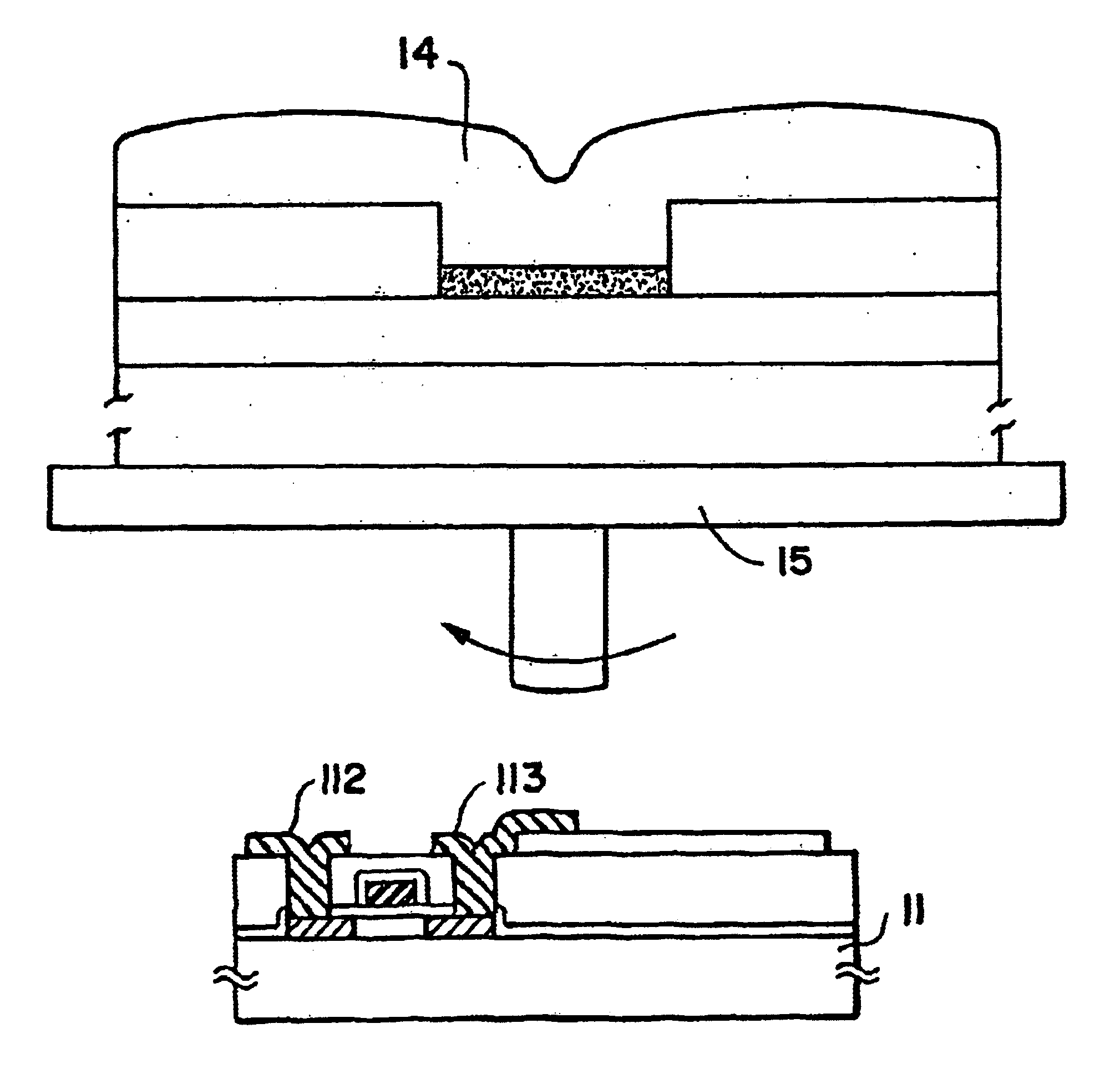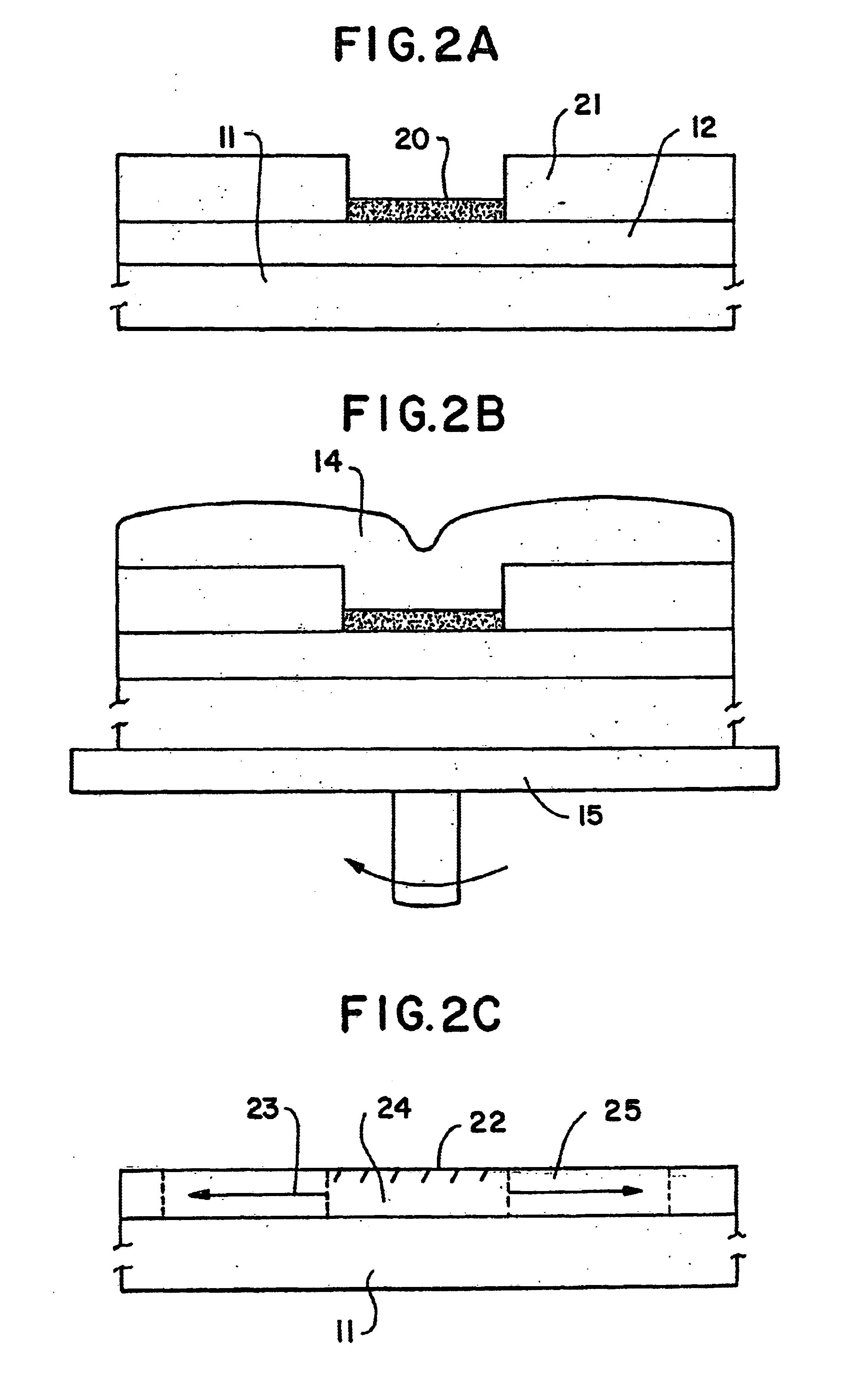Method for manufacturing a semiconductor device
- Summary
- Abstract
- Description
- Claims
- Application Information
AI Technical Summary
Benefits of technology
Problems solved by technology
Method used
Image
Examples
example 1
[0055]The present example refers to a process for fabricating a crystalline silicon film on the surface of a glass substrate. Referring to FIGS. 1A-1D, the process for incorporating a catalyst element (nickel in this case) into the amorphous silicon film is described below. A Corning 7059 glass substrate 100 mm×100 mm in size is used.
[0056]An amorphous silicon film from 100 to 1,500 Å in thickness is deposited by plasma CVD or LPCVD. More specifically in this case, an amorphous silicon film 12 is deposited at a thickness of 1,000 Å by plasma CVD (FIG. 1A).
[0057]Then, the amorphous silicon film is subjected to hydrofluoric acid treatment to remove impurities and a natural oxide formed thereon, if necessary. This treatment is followed by the deposition of an oxide film 13 on the amorphous silicon film to a thickness of from 10 to 50 Å. A natural oxide film may be utilized as the oxide film. The precise thickness of the oxide film 13 is not available because the film is extremely thin....
example 2
[0065]The present example refers to a process similar to that described in Example 1, except that a silicon oxide film 1,200 Å in thickness is provided selectively to incorporate nickel into selected regions of the amorphous silicon film using the silicon oxide film as a mask.
[0066]Referring to FIGS. 2A to 2C, the process for fabricating a semiconductor according to the present example is described below. A silicon oxide film is deposited to a thickness of 1,000 Å or more e.g. 1200 Å as a mask on an amorphous silicon film 12. The silicon oxide film 21, however, may be thinner than 1000 Å, e.g. 500 Å if the film is sufficiently dense as a mask. The silicon oxide film 21 is patterned into a predetermined pattern thereafter by means of a conventional photolithography technique. A thin silicon oxide film 20 is formed by irradiating a UV radiation in oxygen atmosphere for 5 minutes. The thickness of the silicon oxide film 20 is presumably from about 20 to 50 Å (FIG. 2A). The function of ...
example 3
[0091]The present example relates to a process for fabricating TFTs which are provided to each of the pixels of an active matrix liquid crystal display device, using a crystalline silicon film fabricated by the process according to the present invention. The TFTs thus obtained can be applied not only to liquid crystal display devices, but also to a wide field generally denoted as thin film integrated circuits (ICs).
[0092]Referring to FIGS. 6A to 6E, the process for fabricating a TFT according to the present example is described below. A silicon oxide film (not shown in the figure) is deposited to a thickness of 2,000 Å as a base coating on a glass substrate. This silicon oxide film is provided to prevent the diffusion of impurities into the device structure from the glass substrate.
[0093]An amorphous silicon film is deposited thereafter to a thickness of 1,000 Å in a manner similar to that used in Example 1. After removing the natural oxide film by a treatment using hydrofluoric aci...
PUM
| Property | Measurement | Unit |
|---|---|---|
| Concentration | aaaaa | aaaaa |
| Semiconductor properties | aaaaa | aaaaa |
Abstract
Description
Claims
Application Information
 Login to View More
Login to View More - R&D
- Intellectual Property
- Life Sciences
- Materials
- Tech Scout
- Unparalleled Data Quality
- Higher Quality Content
- 60% Fewer Hallucinations
Browse by: Latest US Patents, China's latest patents, Technical Efficacy Thesaurus, Application Domain, Technology Topic, Popular Technical Reports.
© 2025 PatSnap. All rights reserved.Legal|Privacy policy|Modern Slavery Act Transparency Statement|Sitemap|About US| Contact US: help@patsnap.com



